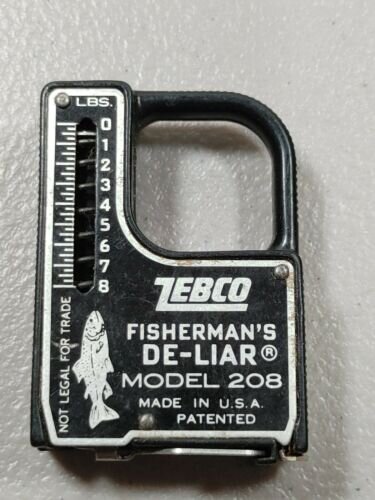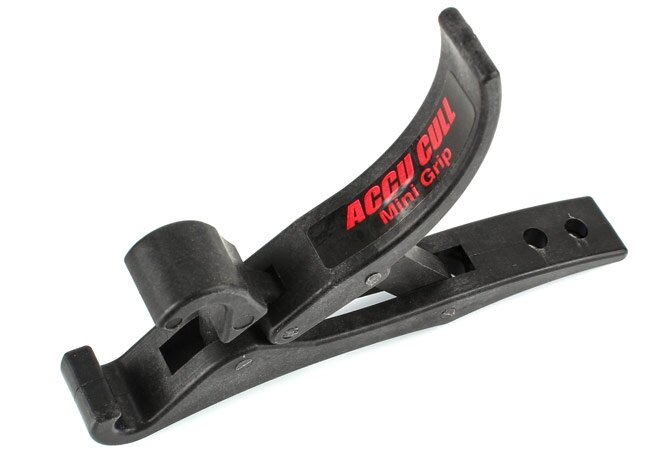Four Steps to Soup up Your Scale
When it comes to muskies, sailfish, trout and many other species, inches are the primary system of comparison. With those fish I don’t care about weight, but with bass I’m a stickler for pounds and for accuracy. That’s partially because I think so many of my fellow anglers are serial exaggerators and mis-estimators and I don’t want to be among their ranks. It’s also because if I catch a trophy, I want it to be legit. That’s why I have so much respect for others who stay on the straight and narrow. I don’t weigh every fish, but I weigh many of the biggest ones to make sure I can accurately report what I catch.
Unfortunately, scales made for fishing have historically been unreliable or imprecise. Many of you remember the old De-Liars that were probably the worst in this respect, but even many later digital models were all over the place. One might tell you that a bass was 5 pounds, while another read out 7 pounds for the same fish. Even if they read the same weights out of the package, eventually many of them diverged. Even the same scale would sometimes provide different weights for the same fish if it was weighed a second or third time.
So which scale should you choose? Well, the Boga Grips are known to be extremely accurate and can be sent to the IGFA to have them certified for world record catches. I own one and use it with peacocks and some larger saltwater species, but I don’t like them for bass because they only measure in ¼ and ½ pound increments. If you want to know whether the fish you caught is 10.29 and beats your prior personal best of 10.27, this one won’t help you. In recent years I’ve settled on the Brecknell ElectroSamson. It’s the same one that MLF uses and that B.A.S.S. uses at the TTBC. I’ve found it be to very accurate, consistent and long-living, better than any other model I’ve tried. I paid retail for it, so there’s no bias here. I’m also told that the most recent and advanced Rapala scales are very good, but cannot vouch for them firsthand.
No matter which scale you use, here are a few steps that I recommend that you take:
Make Sure It’s Accurate
If you really want to know that your trophy weighed what you claim it weighed, check your scale’s accuracy. Take a 5 or 10 pound weight and hang it from the hook. Better yet, go to the meat section of your local supermarket and try out a variety of different packages to see how close it comes to their determinations. If it’s off the mark, either your scale is bad or your supermarket has been ripping you off. Assuming it’s the former, there may be a way to recalibrate your scale or send it back to the manufacturer for refund or replacement.
Make Sure It Protects the Fish
The original Brecknell came with just a dull “J-Hook” from which to hang the fish. You had to either put the hook in a soft spot in its jaw and hope that it hung on (spoiler alert: at the first flop the fish often ended up on the floor of the boat or back in the drink) or puncture its jaw. Neither one was a good option. So I added an Accu Cull Mini Grip to clamp down on the fish and get a quick weight. I drilled the hole out a little more to allow the J-Hook to slide in and then added a tightly-knotted rubber band over the hook’s shaft to prevent the clip from coming off. You can also epoxy it into place to keep it there. Later versions of the ElectroSamson come with this type of clamp. If your scale does not have a secure mechanism, add one.
Make Sure It’s Accessible
While the ElectroSamson seems to be made of top-notch components, its provided carrying case is remarkably cheap and flimsy. You have to take the scale apart to store it, which means that you have to put it back together to weigh a fish. Not the end of the world, but a pain in the ass while you have a flopping fish you want to photograph and return to the water, nonetheless. Perhaps just as significantly, it puts the scale at risk of damage in a suitcase or tackle bag, or even on a rough boat ride. I recently replaced it with a hard-sided EVA protective travel case made for electronics. When I pack it in my luggage I put some buffs or socks in there for further protection.
Make Sure It’s Powered Up
One advantage of the Boga Grip and spring scales is that they can’t run out of juice because they don’t require any to start with. While the ElectroSamson’s battery has been exceptionally long-lived, I still live in fear that I’ll catch the fish of a lifetime and the scale won’t fire up. One solution, of course, is to check the battery before every trip. Another is to remove the battery when not in use and replace it before weighing your trophy – although that doesn’t one hundred percent guarantee that the battery won’t die anyway. Keep an extra 9 Volt in the carrying case as a precaution.








